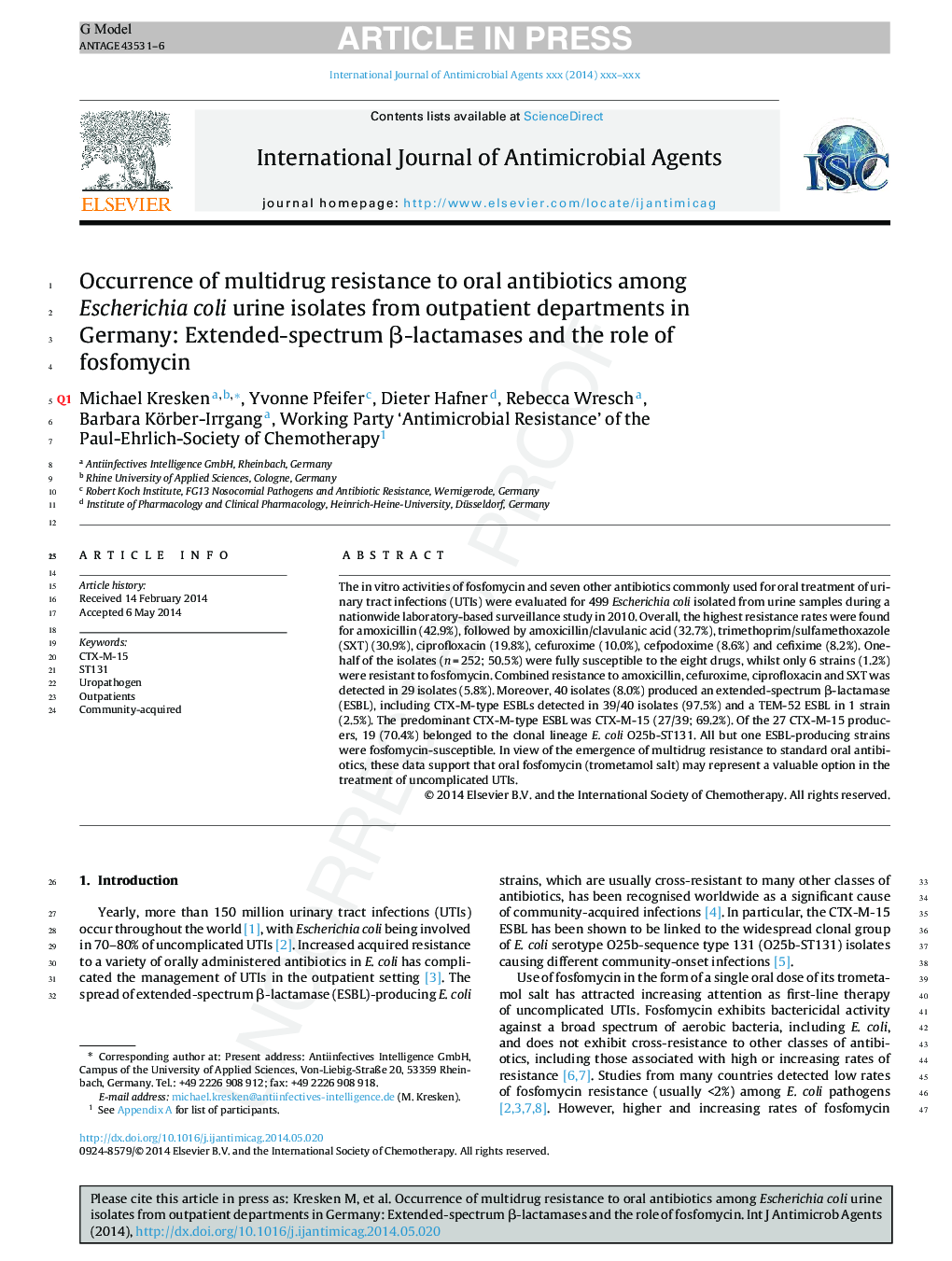| Article ID | Journal | Published Year | Pages | File Type |
|---|---|---|---|---|
| 6117911 | International Journal of Antimicrobial Agents | 2014 | 6 Pages |
Abstract
The in vitro activities of fosfomycin and seven other antibiotics commonly used for oral treatment of urinary tract infections (UTIs) were evaluated for 499 Escherichia coli isolated from urine samples during a nationwide laboratory-based surveillance study in 2010. Overall, the highest resistance rates were found for amoxicillin (42.9%), followed by amoxicillin/clavulanic acid (32.7%), trimethoprim/sulfamethoxazole (SXT) (30.9%), ciprofloxacin (19.8%), cefuroxime (10.0%), cefpodoxime (8.6%) and cefixime (8.2%). One-half of the isolates (n = 252; 50.5%) were fully susceptible to the eight drugs, whilst only 6 strains (1.2%) were resistant to fosfomycin. Combined resistance to amoxicillin, cefuroxime, ciprofloxacin and SXT was detected in 29 isolates (5.8%). Moreover, 40 isolates (8.0%) produced an extended-spectrum β-lactamase (ESBL), including CTX-M-type ESBLs detected in 39/40 isolates (97.5%) and a TEM-52 ESBL in 1 strain (2.5%). The predominant CTX-M-type ESBL was CTX-M-15 (27/39; 69.2%). Of the 27 CTX-M-15 producers, 19 (70.4%) belonged to the clonal lineage E. coli O25b-ST131. All but one ESBL-producing strains were fosfomycin-susceptible. In view of the emergence of multidrug resistance to standard oral antibiotics, these data support that oral fosfomycin (trometamol salt) may represent a valuable option in the treatment of uncomplicated UTIs.
Related Topics
Life Sciences
Immunology and Microbiology
Applied Microbiology and Biotechnology
Authors
Michael Kresken, Yvonne Pfeifer, Dieter Hafner, Rebecca Wresch, Barbara Körber-Irrgang,
